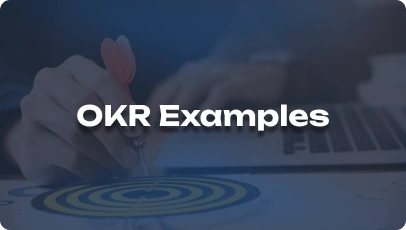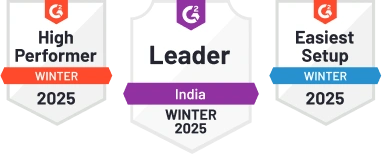Grab a chance to avail 6 Months of Performance Module for FREE
Book a free demo session & learn more about it!
-
Will customized solution for your needs.
-
Empowering users with user-friendly features.
-
Driving success across diverse industries, everywhere.
Grab a chance to avail 6 Months of Performance Module for FREE
Book a free demo session & learn more about it!
Superworks
Modern HR Workplace
Your Partner in the entire Employee Life Cycle
From recruitment to retirement manage every stage of employee lifecycle with ease.



Seamless onboarding & offboarding
Automated compliance & payroll
Track performance & engagement
Key Account Manager Example KRA/KPI
- Key Responsibility Areas (KRA) & Key Performance Indicators (KPI) for Key Account Manager Example
- 1. Relationship Management
- 2. Account Planning and Strategy
- 3. Cross-functional Collaboration
- 4. Performance Analysis and Reporting
- 5. Customer Satisfaction and Feedback
- 6. Contract Renewal and Upselling
- 7. Risk Management and Issue Resolution
- 8. Market and Competitor Analysis
- 9. Training and Development
- 10. Technology Adoption and Innovation
- Real-Time Example of KRA & KPI
- Client Retention
- Key Takeaways
Key Responsibility Areas (KRA) & Key Performance Indicators (KPI) for Key Account Manager Example
1. Relationship Management
KRA: Building and maintaining strong relationships with key accounts to drive customer satisfaction and loyalty.
Short Description: Cultivating client partnerships for long-term success.
- Customer Retention Rate
- Net Promoter Score (NPS)
- Number of Upsell Opportunities Identified
- Client Feedback Response Time
2. Account Planning and Strategy
KRA: Developing strategic account plans to maximize revenue and growth opportunities.
Short Description: Crafting tailored strategies for each key account.
- Revenue Growth from Key Accounts
- Percentage of Account Plan Achievement
- Strategic Opportunity Pipeline Value
- Customer Lifetime Value (CLV)
3. Cross-functional Collaboration
KRA: Collaborating with internal teams to ensure seamless delivery and support for key accounts.
Short Description: Facilitating teamwork for client success.
- Internal Stakeholder Satisfaction Rating
- Number of Cross-Selling Initiatives Implemented
- Response Time to Client Issues
- Percentage of Support Tickets Resolved
4. Performance Analysis and Reporting
KRA: Analyzing account performance data and providing insights through regular reports.
Short Description: Leveraging data for informed decision-making.
- Monthly Revenue Growth Analysis
- Client KPI Achievement Rate
- Accuracy of Forecasted Revenue
- Number of Actionable Insights Shared
5. Customer Satisfaction and Feedback
KRA: Monitoring customer satisfaction levels and gathering feedback for continuous improvement.
Short Description: Ensuring customer happiness and loyalty.
- Customer Satisfaction Score (CSAT)
- Rate of Customer Issue Resolution
- Feedback Response Rate
- Percentage of Positive Testimonials Received
6. Contract Renewal and Upselling
KRA: Proactively managing contract renewals and identifying upsell opportunities.
Short Description: Driving revenue growth through existing accounts.
- Contract Renewal Rate
- Upsell Revenue Generated
- Upsell Conversion Rate
- Number of Cross-Sell Opportunities Identified
7. Risk Management and Issue Resolution
KRA: Identifying potential risks and resolving issues to maintain trust and satisfaction.
Short Description: Mitigating risks for sustainable relationships.
- Number of Risk Mitigation Strategies Implemented
- Issue Resolution Time
- Client Trust Score
- Percentage of SLA Compliance
8. Market and Competitor Analysis
KRA: Monitoring market trends and competitor activities to adapt account strategies accordingly.
Short Description: Staying ahead through competitive intelligence.
- Market Share Growth Rate
- Competitor Analysis Accuracy
- Number of Competitive Insights Shared
- Adaptation Rate to Market Changes
9. Training and Development
KRA: Providing training and development opportunities for key account teams to enhance skills and knowledge.
Short Description: Building a high-performing account management team.
- Training Attendance Rate
- Employee Skill Improvement Rate
- Number of Knowledge Sharing Sessions Conducted
- Team Performance Growth Rate
10. Technology Adoption and Innovation
KRA: Leveraging technology solutions and fostering innovation to streamline processes and deliver value to key accounts.
Short Description: Embracing digital transformation for enhanced customer experiences.
- Technology Adoption Rate
- Innovation Implementation Success Rate
- Process Efficiency Improvement Rate
- Customer Engagement Metrics Growth
Real-Time Example of KRA & KPI
Client Retention
KRA: Ensuring client retention by providing exceptional service and personalized solutions.
- KPI 1: Client Retention Rate: 95%
- KPI 2: Customer Lifetime Value Increase: 10% annually
- KPI 3: Average Response Time to Client Inquiries: < 1 hour
- KPI 4: Number of Client Referrals Generated: 20% growth
By achieving high client retention rates and increasing customer lifetime value, the company can drive sustainable growth and success in the long term.
Key Takeaways
- KRA defines what needs to be done, whereas KPI measures how well it is done.
- KPIs should always be SMART (Specific, Measurable, Achievable, Relevant, Time-bound).
- Regular tracking and adjustments ensure success in Key Account Manager Example.
Generate content in this structured format with clear, concise, and measurable KPIs while maintaining professional readability.




